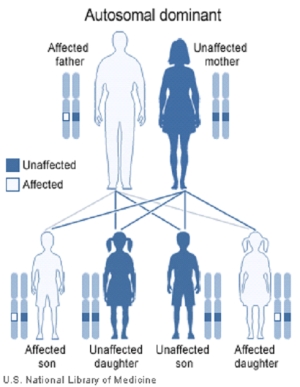Cancer
Cancer is the uncontrolled growth and spread of cells, driven by mutations in genes that convert normal cells into cancer cells. It can affect almost any part of the body. The growths often invade surrounding tissue and can metastasize to distant sites. Many cancers can be prevented by avoiding exposure to common risk factors, such as tobacco smoke. In addition, a significant proportion of cancers can be cured, by surgery, radiotherapy or chemotherapy, especially if they are detected early. Early detection of cancer greatly increases the chances for successful treatment. Recognizing possible warning signs of cancer and taking prompt action leads to early diagnosis.
Cancer Panels
Sometimes, certain types of cancer seem to run in families. It can be because family members have certain risk factors in common, such as smoking, which can cause many types of cancer. It can also be due in part to some other factors, like obesity, that tend to run in families and influence cancer risk.
But in some cases the cancer is caused by an abnormal gene that is being passed along from generation to generation. Although this is often referred to as inherited cancer, what is inherited is the abnormal gene that can lead to cancer, not the cancer itself. Only about 5% to 10% of all cancers are inherited – resulting directly from gene defects (called mutations) inherited from a parent. Recently, tests to identify such harmful mutations have become available to test individuals who have an increased risk of hereditary cancer.
About 5-10% of all cancers show an increased occurrence among members of the same family. Studies have shown that abnormal changes in genes results in the occurrence of such cancers and these changes are also passed along from generation to generation inherited from either mother or father. Identification of affected individuals is warranted since they are predisposed to developing these cancers, sometimes even earlier than previous generations (eg. Below 50 yrs), and occur in several family members or occur multiple times in the same individual.

These cancers are grouped under Hereditary Cancer Syndromes leading to high risk of development of breast, ovarian, colorectal, endometrial, gastric, prostate, pancreatic cancers, and melanoma. Most of these inherited cancers are transmitted in an Autosomal Dominant pattern. If one of the parents is affected, there is 50% chance of transmission to children.
myRisk™
MyRisk™ is a test developed by Myriad Genetic Laboratories that measures an individual’s risk of developing hereditary cancer syndromes.
BRACAnalysis®
The BRACAnalysis® test assesses a person’s risk of developing hereditary breast or ovarian cancer based on the detection of mutations in the BRCA1 and BRCA2 genes.
Unique genetic information about cancer can be obtained to help doctors in making treatment recommendations. Information that can be obtained from targeted sequencing and mutation analysis may include prognostic indicators, improved disease classification, additional therapies, or relevant clinical trials.
These genes are of high clinical and biologic importance, and information about the presence of particular mutations can help doctors in making treatment recommendations.
Hereditary Breast and Ovarian Cancer
Approximately 7% of breast cancer and 11 – 15% of ovarian cancer cases are caused by mutations in the BRCA1 or BRCA2 genes. When someone carries a mutation in either of these genes, they have a syndrome called Hereditary Breast and Ovarian Cancer (HBOC) syndrome. Myriad offers testing to determine whether a patient is a carrier of the BRCA1 or BRCA2 gene mutations. When assessing the risk of carrying these mutations a patient’s personal and family history is collected to investigate the risk for HBOC. Once a patient is identified as being at increased risk of HBOC, genetic test results provide the most accurate means of cancer risk assessment for a patient.
In 2012, 1.7 million women were diagnosed with breast cancer and there were 6.3 million women alive who had been diagnosed with breast cancer in the previous five years. But breast cancer is not always the same thing, and thus each treatment should be based on an individual decision.
Crucial factors for the right choice of treatment are molecular markers such as hormone receptors and the growth factor receptor HER2/neu. Thus, the tumours can be divided into three subgroups important for diagnosis and treatment.
Doctors can also use tests such as EndoPredict® on certain types of breast cancers to determine whether a given patient needs chemotherapy, or whether solely anti-hormonal therapy constitutes sufficient treatment.
EndoPredict®
EndoPredict is a prognostic 2nd generation IVD gene expression test to determine the risk of distant metastases in patients with estrogen receptor positive, HER2-negative primary breast cancer.
Prostate cancer is when cancer develops in the prostate, a gland in the male reproductive system. While some prostate cancers may grow and spread rapidly, many prostate cancers are slow growing. In these slow-growing cases, it might be appropriate to pursue conservative management strategies such as watchful waiting or active surveillance. Your doctor will monitor your tumor through regular follow-ups without definitive treatment such as surgery or radiation therapy. Surgery and radiation therapy may result in complications such as erectile dysfunction or urinary incontinence. In the case of fast growing prostate cancer, definitive treatment is essential. Therefore, it is important to assess the aggressiveness of the tumor as accurately as possible to determine the most appropriate treatment strategy.
Prolaris®
Prolaris® is a test that measures how fast the cells in your tumor are dividing. Since you have had a biopsy, that tissue sample can be used to determine your Prolaris Score.

